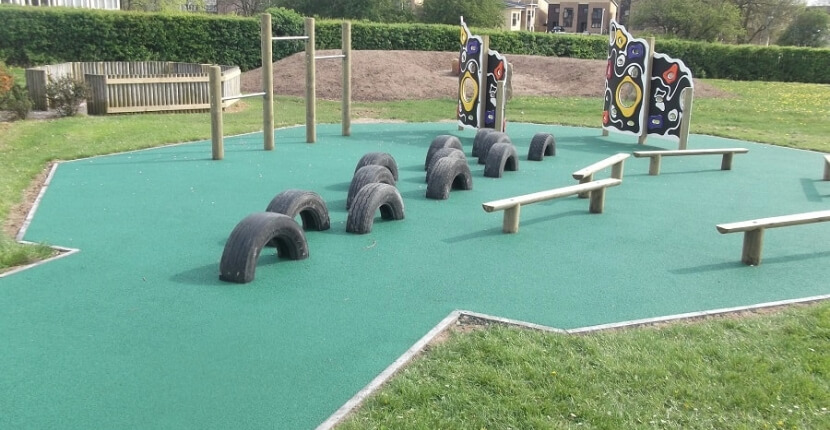Fulfilling play opportunities for children are fundamental to their development and are a great opportunity for children to disconnect from the digital world and play freely. As part of general playground management plans; schools need to ensure their provide safe equipment, inspection and regular maintenance. A risk assessment is required under the Health and Safety at Work etc Act 1974 on all equipment available for children to play on.
Common myths
- Playgrounds should be completely risk-free: The goal is not to eliminate all risk; but to weigh up the risk and benefits. Industry standards such as EN 1176 offer benchmarks which can help with decision making.
- There should be no accidents on play equipment: Minor accidents are a normal part of play, and it should be challenging. These experiences help build resilience and confidence.
EN 1176 the basics
- Structural Strength: including adults who may climb equipment to help a child.
- Protection against falling: provide guardrails around platforms, narrow openings at height and impact absorbing surfaces.
- Protection against entrapment: of hair, clothing or body parts.
- Protection against lacerations: including sharp edges, rough surfaces and hard edges.
- Clear instructions: provided by manufacturer on how to service, maintain and repair equipment.
Play Equipment Inspections
Equipment can become damaged, vandalised or misused, therefore, regular visual and formal safety inspections by a qualified inspector need to be carried out on a regular basis. Those providing play opportunities should focus on controlling the real risks, while securing or increasing the benefits.
- Annual Formal Inspection: Undertaken by a qualified person producing a detailed written report
- Termly Visual Inspection: Undertaken by a qualified person checking equipment condition with a checklist
- Regular School Checks: Play Equipment Log Book checks undertaken dependant upon frequency of play equipment use (at least weekly for low use / daily for high use). These checks should be undertaken by a suitable member of staff to check pathways, safety surfaces, breakages and signs of vandalism using the prompts provided within the log book.
Accidents and mistakes happen during play, but fear of litigation and prosecution has been blown out of proportion. Play environments do not need to be sterile and lack challenge; this prevents children from expanding their learning and stretching their abilities.
Resources and Links:
Children’s play and leisure – HSE
A Guide to EN 1176
Managing Risk in Play Provision

